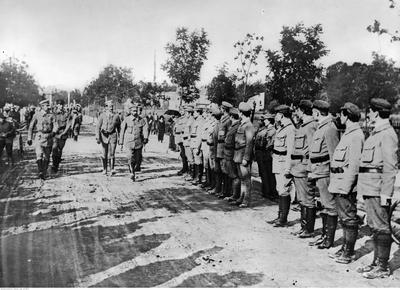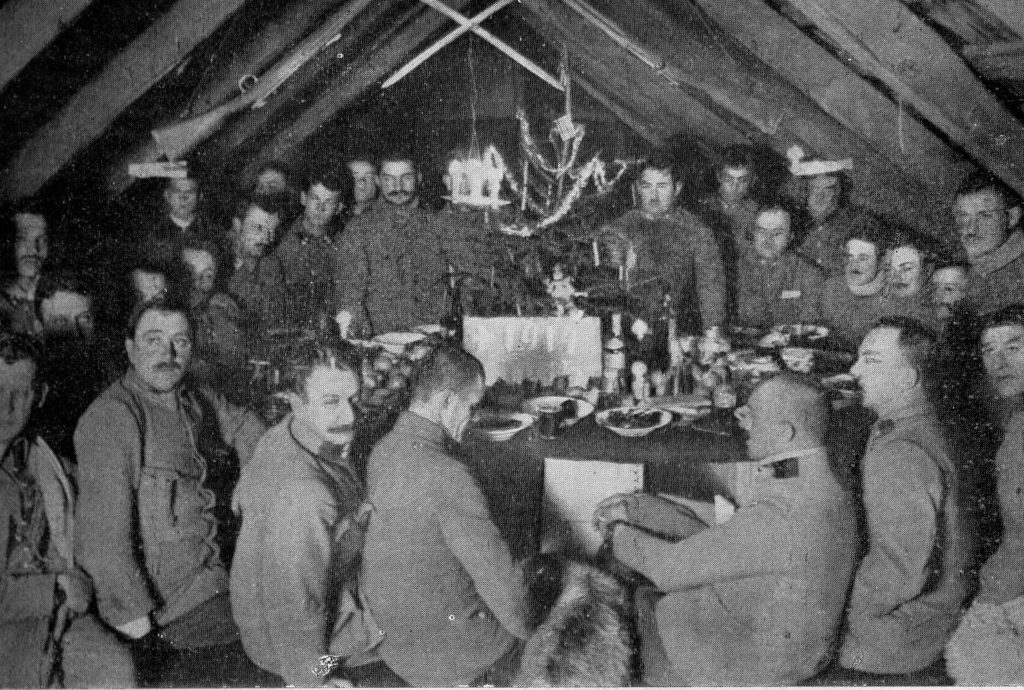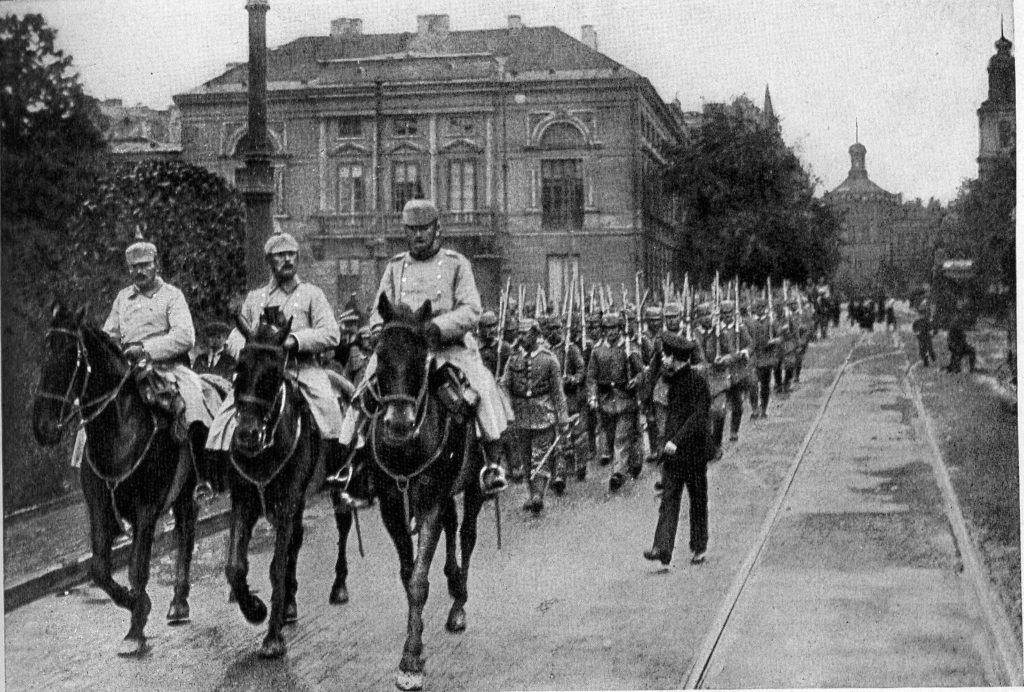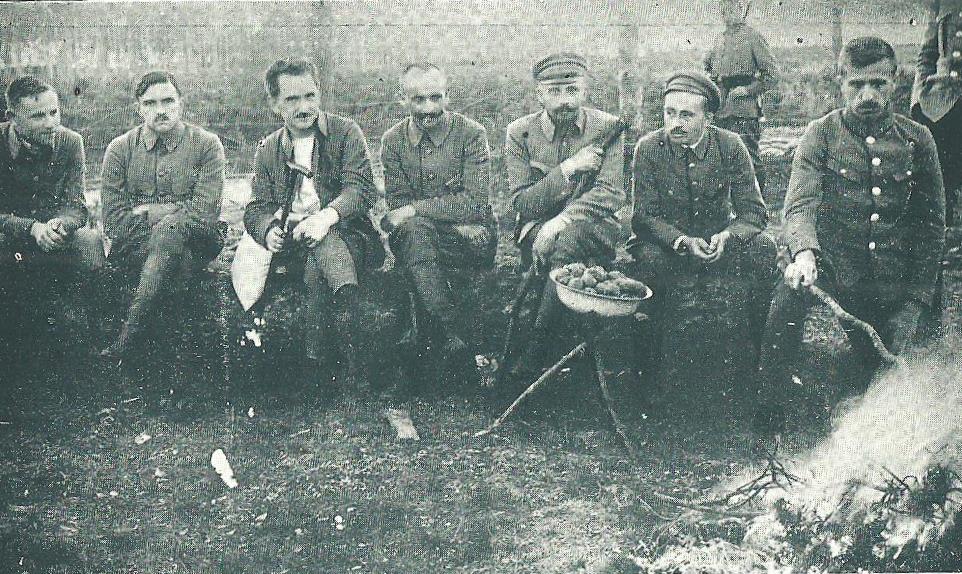Polish Roads to Independence
In November 1918, after 123 years of absence on European political maps, Poland regained its independence. This was mainly due to the perseverance and dedication of the active part of Polish society, who, during the period of servitude, passed down their allegiance to the language and national culture to new generations of young Poles. In the years of the First World War (1914–1918), circumstances favorable to “the Polish question” appeared in the political spectrum. Poland’s partitioners stood against each other, breaking their previous solidarity on the Polish issue.
Despite over one hundred years of servitude, the bloody suppression of national insurrections, political repression, Siberian katorga, and increasing Russification and Germanization policies at the turn of the century, the Poles did not give up their dreams of regaining independence. The Polish elites, in various ways, tried to instill the national consciousness in Polish peasants and workers. Various forms of self-education were developed and efforts were made to maintain the Polish language in the school system. All major Polish political parties placed an agenda of reconstructing the Polish state in their manifesto. The Galicia region, enjoying broad political autonomy since the 1860s, became the center of Polish national activity. Activists hunted down by the Russians were taking refuge there, Polish political parties were operating freely, and Polish language was commonly used in education, administration, and the judiciary. Polish national celebrations were uproariously celebrated, like the anniversaries of the outbreaks of national uprisings or the passing of the May 3rd Constitution.
Polish hopes for regaining independence increased at the turn of the century, as the disputes between the invaders—Russia on one hand and Germany and Austria–Hungary on other—began to spread. Numerous international crises which erupted at that time (such as the Moroccan or Balkan ones) made more and more real the vision of a pan-European war—and consequently, the internationalization of the Polish question. Properly preparing for such a conflict soon became a must. In the year 1908, Józef Piłsudski and his associates founded the Związek Walki Czynnej (Union of Active Struggle) in Lviv. Soon, paramilitary organizations started to emerge all over Galicia (such as the Polish Riflemen’s Association), aimed at providing military training for Polish youth and at preparing them for the fight for independence.

Exercises of the Związek Strzelecki (Polish Riflemen’s Association) in Zakopane, 1913 (from Narodowe Archiwum Cyfrowe NAC/ NDA archive, reference no. 22-100-4)
In the summer of 1914, at the beginning of the War, Poles faced the dilemma of choosing sides in the conflict. Some, including Józef Piłsudski, tied their hopes of rebuilding the Republic of Poland with the Central Powers. Eventually, volunteer-based Polish Legions were formed, fighting alongside the Central Powers’ armies. Others (such as Roman Dmowski), saw the Russia Empire and its allies in the West as the powers that could first unite the Polish lands and, in the long-term, lead Poland toward regaining its independence. For hundreds of thousands of Poles mobilized into the armies of the partitioning countries, the war had a fratricidal character. In addition, the warfare itself contributed to massive property damage, as hundreds of thousands were forced to flee their homes and become refugees.
In the very first days of the war, the Poles took up arms, demonstrating to the world their right to a country of their own. On August 6, 1914, Józef Piłsudski led his First Cadre Company across the Austrian–Russian border, entering the Russian partition territories with armed troops. Soon after, the Polish Legions began to form in Galicia. Over a one-year period, the Legions expanded to the size of three brigades, totaling twenty to twenty-five thousand soldiers. Józef Piłsudski soon took command of the First Brigade. From 1914 to 1916, the Legions fought in the territories of Lesser Poland, the Eastern Carpathians, Lublin, and Volhynia. The supporters of rebuilding Poland with the aid of the Central Powers established, in the summer of 1914, the Supreme National Committee based in Kraków, with the sole purpose of becoming the main political representation of the Poles.

New Year’s Eve party of Polish Legion 2nd Brigade, Carpathian Mountains, 1914. Public domain.
On the other end of the spectrum, the parties eager to cooperate with the Triple Entente—gathered in Warsaw in November 1914—founded the Polish National Committee, with Roman Dmowski as one of its leaders. Alongside the Russian army, a small unit, numbering only around a thousand volunteers, was established. It was called the Puławy Legion.
In 1915, as a result of the Germans seizure of Warsaw, the Polish National Committee moved to Petrograd and the Puławy Legion, which suffered great losses, almost ceased to exist. Two years later, when Russia was overpowered by revolution, Dmowski moved to France, where another committee was set up in Paris. He soon became the main advocate of the “Polish Question” in the Entente camp, taking on a kind of peculiar government-in-exile role. In France, at the beginning of the War, a small volunteer squad of Poles was formed, the so-called “Bajończycy” (French: Légion des Bayonnais) .

German troops at Krakowskie Przedmieście in Warsaw, summer of 1915. Public domain.
The long-awaited breakthrough in the matters of the “Polish question” came in November 1916. It was then that the emperors of Germany and Austria proclaimed the rebirth of the Polish state on the lands taken from Russia (in the Act of November 5th). It was a breakthrough in the “conspiracy of silence” on the Polish question. A few months later, the Russian tsar was overthrown. The new Russian authorities officially recognized the right of Poles to self-determination. Soon, the French and British decided to follow. Understanding that the Central Powers were not ready to give Poland real independence, Piłsudski ended his cooperation with them and, as a result, was imprisoned. The Legions were dissolved.
Despite initial euphoria, the Act of November 5th quickly disappointed the Polish people, due to the fact that Emperors Wilhelm II and Franz Joseph I of Austria did not define the borders of the Polish state. They were also silent about who would be the future monarch of the reborn state. It soon became clear for all that the only thing they ever cared for was acquiring Polish recruits. In subsequent months in the occupied territories, Polish institutions of public administration, such as the Provisional Council of State, the Regency Council, and even the government, were established. However, they acted only as “advisory boards” to the occupying authorities.
In the spring of 1917, the legionnaires grew frustrated and uncertain about the future. It was then that the Legions were transferred to German command and they were to form the basis of the future Polish army. The legionnaires started to fear that their formations could lose its strictly Polish, national character. The international context of the Polish question also changed. In Russia, the tsardom was overthrown and the powerful United States joined the war against the Central Powers. In such an atmosphere, Piłsudski felt that the tactical alliance he made at the beginning of the war with the Central Powers was starting to be a burden. July 1917 was a political turning point. At Pilsudski’s prompting, most of the legionnaires (mostly soldiers of the 1st and 3rd Brigades, among whom the majority of soldiers were his supporters) refused to swear a new version of the military oath, which obliged them to maintain their allegiance to the Central Powers until the end of the ongoing war. As a result, the Polish Legions were dissolved. The legionnaires—former Russian subjects—were imprisoned in camps in Szczypiorno near Kalisz, in Beniaminów near Zegrze, and in Łomża. By contrast, the Austrian subjects were incorporated into the Austro–Hungarian army and sent to the Italian front. In support of the internees, Polish society organized cash and material collections, and fugitives from the camps were assisted in hiding from the authorities. Piłsudski himself was interned in a military prison at the former fortress of Magdeburg. “The Brigadier,” as some called him, grew to become a legendary martyr of the national cause. His year of imprisonment also helped him to cast off the odium of the Central Powers ally, thus becoming credible in the eyes of the Triple Entente leaders. This fact became extremely important just after the end of the war. Only the soldiers of the 2nd Brigade—most of them Austrian subjects—swore an oath. They continued to fight Russians, alongside the Austro-Hungarian army, as the Polish Auxiliary Corps. Józef Haller soon became their commander.

Officers of the Polish Legion interned in Beniaminów. Public domain
In the West, the luminaries of Polish culture actively lobbied in the favor of the “Polish question.” Ignacy Paderewski collected money for the victims of war on Polish soil and persuaded Western politicians to support the idea of Poland’s independence. As a result of actions taken by Paderewski and others, Woodrow Wilson, the president of the United States (which joined the war in April 1917) began to favor the Poles. The demand for Poland’s independence was soon recognized by other Triple Entente leaders as well. In France, consisting mainly of volunteers from the Polish community, the Polish Army (Blue Army) was formed.
After the overthrow of the tsardom, units consisting only of Poles (three corps) were created within the Russian army. Their members tried to distance themselves from the chaos that was growing in Russia, and after the October Revolution tried to maintain neutrality in the war between the White and Red Armies. As a result of the ongoing political changes in Russia, her western allies—namely the United Kingdom, France, and Italy—began to see Poles as desirable allies. In the summer of 1917, France began forming the Polish Army, named the Blue Army after the color of their uniforms. Soon, volunteers from Western Europe, the United States, and Canada, as well as Polish POWs from the German army, joined its ranks. The Blue Army began its fight against Germany in the last days of the war.
In February 1918, the Central Powers signed the Treaty of Brest–Litovsk with Ukraine (the UNR), a move seen from the Polish perspective as very detrimental. Disappointed, Poles finally cut ties with the Central Powers and shifted their hope of rebuilding Poland to the Triple Entente states. The last Polish divisions fighting alongside the Central Powers were dissolved. In his speech addressing Congress in January 1918, Woodrow Wilson announced the reconstruction of an independent Poland with access to the sea, stating it as one of the conditions for a permanent peace.
The agreement signed between Germany and Austria–Hungary with the newly formed Ukrainian People’s Republic assumed the transfer of the Chełm Land to the Ukrainians. This act provoked widespread infuriation among the Polish public, which considered this document to be another partition of Poland. This fury was expressed in violent rallies and strikes. In Galicia, public officials of Polish origin resigned from their positions, people decorated by the state were sending back their medals, and the nobility divested themselves of their titles. Polish parliamentarians in Vienna announced that they would join the opposition parties. The Polish Auxiliary Corps was also dissolved. Some of its soldiers crossed the border with Russia, while some of them were interned.

Protests against the Treaty of Brest–Litovsk, Kraków, February 16, 1918. Public domain.
What was left of the positive image of the Central Powers in the eyes of Polish public opinion was irreversibly lost. The Poles developed a radical, republican stance, the underground press flourished, and secret organizations—like the Polish Military Organization, established by Piłsudski in 1914—were thriving. The vast majority of Polish society rooted for the Triple Entente and awaited further developments.
When the war in the West ended in October/November and the Austro–Hungarian Empire fell apart, the Poles began to disarm the occupiers and to create the institutions of an independent state. Freed from his German captivity, Józef Piłsudski took over full civil and military authority from the Regency Council as Chief of State upon his arrival in Warsaw on November 11, 1918. A new episode in Polish history had begun.
At the beginning of October 1918, news of the German–American negotiations over the conditions of the ceasefire resulted in increased political activity on Polish soil. The Regency Council announced the proclamation of the Kingdom of Poland with access to the sea. The occupying authority’s laws began to be boycotted. The dissolution of Austria–Hungary was deepening, with new independent states emerging and others absorbed by their neighboring countries. On October 28, 1918, in Kraków, the Polish Liquidation Commission was formed and it took over power in Galicia. Similar centers of power emerged in other cities of Western Galicia, while in Eastern Galicia, Lviv included, the Ukrainians tried to take control.
On the territory of the Kingdom of Poland, on the night of November 6, in the liberated city of Lublin, a leftist government was formed with the socialist Ignacy Daszynski at its head. A program of far-reaching social reforms was put forward, including 8-hour shifts, the parcellation of land estates (which would later become the possession of landless peasants and smallholders), and the nationalization of major industries. Many feared that the starved country would embrace revolutionary chaos, just like in Sovietized Russia. The pandemic of Spanish flu began to take a deadly toll. At the end of October, members of the Polish Military Organization—supported by students, young factory workers, scouts, firefighters, and railroad workers—started to spontaneously disarm the occupiers. All over the country, local authorities began to fill the power vacuum left by the occupation authorities and local Austrian authorities in Galicia.
In the Prussian partition prior to December 1918, the Germans firmly held onto power. The Supreme People’s Council, established in 1918, became the center of Polish political life. The Poles had to wait until December for an armed insurgency against the occupiers, as the new republican authorities in Berlin still assumed Germany’s eastern borders to be those of 1914.
On November 10, Józef Piłsudski arrived in Warsaw by train from Berlin, released from prison a few days earlier. The Germans hoped that with his authority, he would end the chaos, and ensure the peaceful passage of German troops returning home from Russia. On the following day, the Regency Council handed over all civil and military authority to Piłsudski, and he assumed the title of Chief of State. The government of Ignacy Daszyński in Lublin also subjugated to Piłsudski’s authority. Despite the human and material losses from 1914-1918, which are difficult to accurately estimate, the challenging, dramatic process of shaping the borders and political systems of the reborn Republic had begun.
Piotr Szlanta, D.Sc.